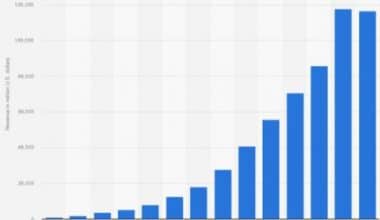You’ve taken your initial steps into business, but you’re still unclear about how to handle your company’s accounts. Accounting is a critical activity that propels your company forward and allows you to assess its success. Before you begin, you must decide on the accounting method that will be used for your organization. In this guide, we will analyze the different accounting methods used in calculating cost in an inventory, a clear comparison between accounting methods accrual vs cash, and a good definition of hybrid accounting methods.
What Is an Accounting Method?
An accounting technique is a set of rules that a corporation uses to record revenues and expenses. The two primary accounting methods are accrual accounting (used by businesses) and cash accounting (used by individuals).
Cash accounting records revenues and expenses as they are collected and paid through cash inflows and outflows, whereas accrual accounting records them as they are earned and incurred through credit sales and purchases, as well as the use of accounts receivable and accounts payable. Accrual accounting is required by generally accepted accounting standards (GAAP).
Types of Accounting Methods
Cash accounting and accrual accounting are the two most used accounting procedures. Individuals and small enterprises often utilize cash accounting, while corporations and huge corporations use accrual accounting. When certain conditions are met, the IRS enables businesses to employ a mix of cash and accrual accounting procedures. Each method is defined and explained below:
#1. Cash Accounting
Cash accounting is a simple accounting system that is widely employed by small firms. Transactions in cash accounting are only recorded when cash is spent or received.
A sale is documented in cash accounting when the payment is received, whereas an expense is recorded only when the bill is paid. The cash accounting method is, of course, the method most people use to manage their personal money, and it is suitable for small firms.
#2. Accrual Accounting
Accrual accounting is founded on the matching concept, which aims to align the timing of revenue and expense recognition. The accrual method provides a more realistic picture of a company’s underlying financial status by matching revenues with expenses.
Transactions are recorded when they are incurred rather than when they are due to be paid under the accrual technique. This means that even if money is not received immediately, a purchase order is reported as revenue. The same is true for expenses, which are recorded even if no payment has been made.
What are the Benefits of Each Accounting Method?
Cash and accrual accounting procedures have different advantages depending on a variety of circumstances, including the size of the organization. Here are some of the ways they can help a business:
#1. Cash accounting
Cash accounting has various advantages since it is easier to use, provides a more accurate cash flow evaluation, and taxes are only applied when the company receives funds. Some organizations choose accrual accounting because it provides a more realistic picture of the company’s long-term performance. Cash is also more convenient because it does not track payables and receivables. However, this implies that it frequently presents an incomplete picture of a company’s finances, making it a more popular choice for startups or smaller firms.
#2. Accrual accounting
Because the accrual approach gives an accurate record of how much money a company makes and spends, it is commonly used by organizations with significant capital, paid staff, and plans to take out loans from lending institutions. As a result, larger businesses or those with multiple locations may prefer to employ the accrual technique to keep more organized. The accrual technique also adheres to GAAP requirements, which means it can aid in the simplification of the audit process if the IRS conducts one.
Accounting Methods Accrual vs Cash
The major distinction between cash and accrual accounting is when income and spending are really represented in a business’s books. Cash accounting is almost always preferred by businesses that are eligible to use it since it is simpler and more straightforward.
Because income and costs are recorded at various periods if a business uses cash vs accrual accounting techniques when businesses incur tax liability (or benefit) as a result of these transactions is affected.
Businesses that use cash accounting, for example, incur tax responsibility when proceeds from a sale enter their account, but businesses that use accrual accounting methods are taxed on sales done in a given year, whether or not those sales have been paid for.
Cash vs. Accrual Accounting Methods at a Glance
| Category | Cash basis | Accrual basis |
|---|---|---|
| When transactions are recorded | When cash is received or money is spent | When a sale occurs or an expense is incurred |
| Tax liability incurred | When the income is received | When the income is recorded |
| Ease of use | Very simple and straightforward | More complex and time-consuming |
| Required for businesses of a certain size | No | Yes |
What are the Accounting Inventory Methods?
Specific identification, first in first out, last in first out, and weighted average are the four main methods for accounting for inventory. As a reminder, inventory includes raw materials, work-in-process items, and finished commodities that a company keeps on hand for its own manufacturing processes or for sale to consumers. Inventory is regarded an asset, so the accountant must apply a legitimate method for allocating costs to inventory on a consistent basis in order to record it as an asset.
Thus, the cost of products sold is largely determined by the cost of terminating inventory, which leads us back to the accounting system utilized. There are numerous inventory cost accounting methods that can be used, as listed below.
#1. Specific Identification Method
The particular identification approach involves tracking the cost of each item in inventory separately and charging the specific cost of an item to the cost of goods sold when you sell the specific item to which that cost has been assigned. Because this method necessitates a vast quantity of data recording, it is reserved for extremely valuable, one-of-a-kind things such as automobiles or works of art. In most other cases, it is not a viable option.
#2. Cost Layering Methods
When you buy inventory from suppliers, the price tends to fluctuate over time, resulting in a stockpile of the same item with some units costing more than others. As you sell stock items, you must select whether to charge things to the cost of products sold that were presumably purchased first, last, or based on an average of the costs of all items in stock. Your policy selection will result in the use of either the first-in-first-out (FIFO), the last-in-first-out (LIFO), or the weighted average technique.
What Is the Hybrid Accounting Method?
The hybrid accounting method is an alternate bookkeeping approach that incorporates components of both the cash basis and accrual accounting methods. To better grasp how it works, you should become acquainted with the two accounting approaches outlined above. The cash basis accounting method entails recording transactions when customers pay you and when you pay your customers. The cash accrual accounting approach, on the other hand, includes recording money when it is earned or paid by your company.
Using hybrid accounting procedures has various advantages. It’s a superior option for forecasting cash flow, for example. The hybrid accounting approach allows you to record transactions at the time money is exchanged or when your business receives or pays it. As a result, many organizations choose the hybrid accounting system since it allows them to more accurately estimate their future cash flow. When adopting the hybrid accounting approach, you can essentially switch between cash basis and accrual accounting systems.
Examples of Using Accounting Methods
To assist you in better comprehending these financial principles, here are some examples of cash and accrual accounting methods utilizing general scenarios:
#1. Nail salon
A nail salon owner chooses cash accounting because of its service-based company model, in which consumers pay after receiving services such as manicures, pedicures, and massages. Because billing invoices aren’t part of its company model, the cash accounting technique allows the owner to record revenue when she obtains it, such as cash from a pedicure customer. The same may be said for expenses such as new nail polish, maintenance, and upkeep.
#2. Personal finances.
A single professional with a low income maintains a computerized spreadsheet of their monthly costs and savings to assist them plan for a future home purchase. They also balance their checkbook on a regular basis instead of depending on online bank statements. They use a cash accounting system with both tools, the spreadsheet, and the checkbook.
When they write a check to pay their landlord’s rent, they record a transaction in their checkbook. They also notice that extra cash from their salary is deposited into their savings account on the day they receive it rather than in advance, as was the case when the company provided the paycheck.
#3. Large construction company
A huge construction business signs a contract to build two apartment complexes, but it may not earn the full amount until the project is completed, or it may receive payments throughout the project. The construction company uses accrual accounting to recognize a percentage of income and expenses connected to the components of the project that it completes. This estimate, known as the percentage of completion, provides a more detailed understanding of the company’s revenue, which can be useful if the company requires business loans. Even when cash accounting is not used, the corporation acknowledges the total amount of cash in the cash flow statement.
What Are the Accounting Methods and Basics?
The cash method and the accrual method are the two most used accounting procedures. A modified accrual technique, which is a blend of the two major approaches, is an alternate bookkeeping method. Income is recorded when it is received, and costs are recorded when they are paid, using the cash method.
What Are the 3 Methods of Accounting?
Cash-basis accounting, accrual accounting, and modified cash-basis accounting are the three types of accounting methods.
What Are the Different Types of Accounting Methods?
The cash method and the accrual method are the two most used accounting procedures. A modified accrual technique, which is a blend of the two major approaches, is an alternate bookkeeping method.
What Are Accounting Methods Other Than Gaap?
A non-GAAP accounting technique used to compile financial statements is Another Comprehensive Basis of Accounting (OCBOA). The income tax basis of accounting, the cash basis of accounting, and the modified cash basis of accounting are all OCBAOA examples.
What Is Simplest Accounting Method?
Cash-basis accounting is the simplest accounting approach because single-entry accounting is the simplest accounting entry method. Many small firms use it for bookkeeping because it is the simplest option. You can only utilize cash accounts with the cash accounting technique.
What Is the Modern Method of Accounting?
The accounts are not debited and credited in the Modern Approach. As a result, the Accounting Equation is utilized to either debit or credit an account. As a result, it is sometimes referred to as the Accounting Equation Approach. The Basic Accounting Equation is as follows: Liabilities + Capital (Owner’s Equity) = Assets
What Are the Four Key Accounting Practices?
Cost, revenue, matching, and disclosure are the four core concepts of generally accepted accounting standards.
Bottom Line
Choosing an accounting technique for your business is determined by the nature of your business. Both strategies have advantages. Cash accounting is useful for extremely small organizations since it provides a wonderful insight into your cash flow. The accrual approach is preferable for larger firms because it provides a more comprehensive picture of the company’s financial status through insightful reports. Before deciding on either approach for your organization, compare them and understand the distinctions between them so you can choose the greatest fit for you.
Related Articles
- CASH ACCOUNTING: Meaning, Examples, Merits, and Demerit
- ACCRUAL ACCOUNTING: A SIMPLIFIED GUIDE FOR BEGINNERS (+Detailed examples)
- CASH ACCOUNTING: Meaning, Examples, Merits, and Demerits
- Direct Method Cash Flow: Definition, Examples & Advantages
- Accrual: A Detailed Guide






